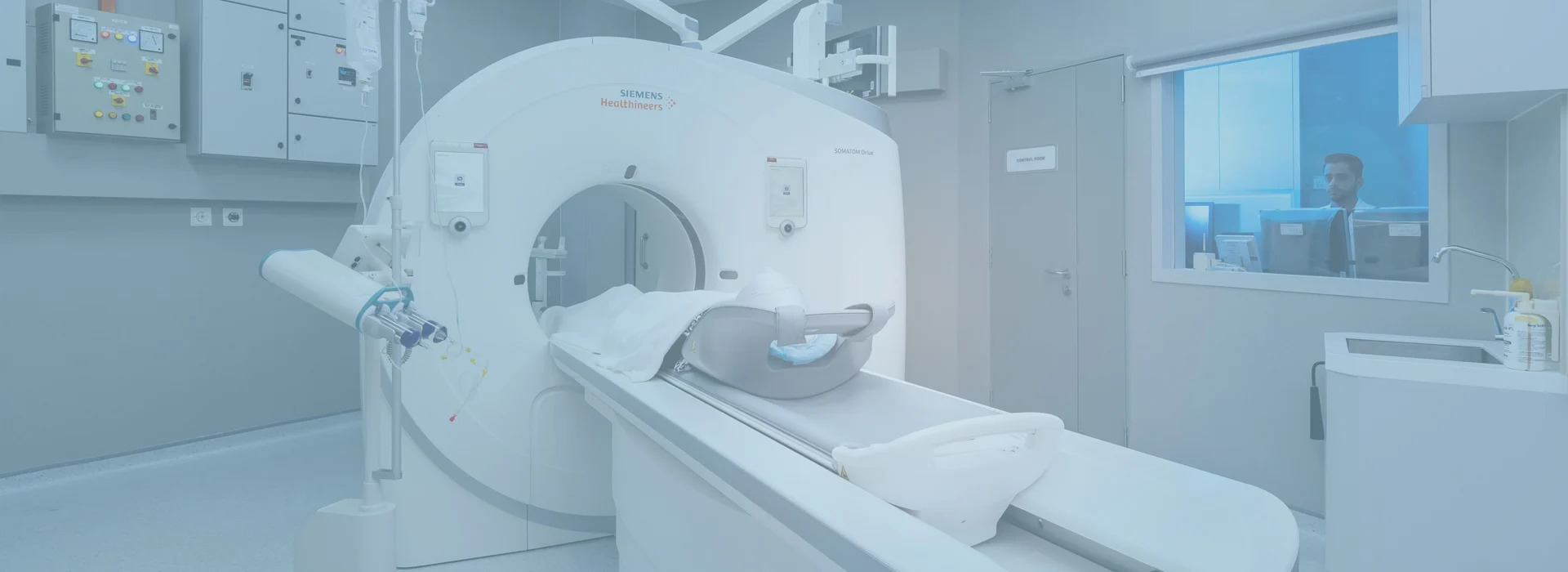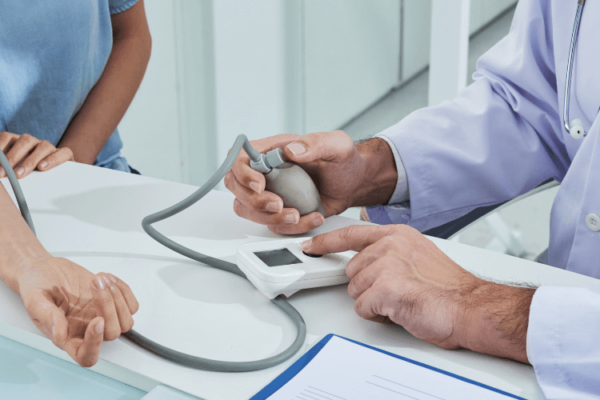
11 Apr Diabetic Retinopathy: What You Need to Know
Diabetic Retinopathy: What You Need to Know
By Island Hospital | Oct 27, 2025 2:43:49 PM
Do you know that Diabetic Retinopathy is the leading cause of blindness and vision loss?
It is a well-known fact that diabetes is a dangerous and potentially life-threatening disease. What some may not realise is that one of the conditions associated with diabetes is a type of vision loss called diabetic retinopathy.
The good news is that this complication is treatable, and the best outcomes are usually obtained from an early diagnosis by your ophthalmologist. The most effective ways to protect your vision lie with knowing what to expect and how to treat diabetic retinopathy.
Diabetic retinopathy is one of the leading causes of vision loss worldwide and is the principal cause of impaired vision in patients between 25 and 74 years of age.
This article will provide a detailed explanation of diabetic retinopathy, including its risk factors, symptoms, diagnostic methods, treatment options, and preventive measures to protect your vision.
What is Diabetic Retinopathy
Diabetic retinopathy (DR) is a common microvascular complication of diabetes. It is a condition that is characterised by a change in the retina’s blood vessels of the eye.
The retina is a thin layer of tissue that lines the back of the eye on the inside and is located near the optic nerve. It senses light and sends images to your brain for visual recognition.
The abnormal blood vessel is caused by an increase in blood glucose, which can harm the blood vessels. When these blood vessels thicken, they can develop leaks, which can then lead to vision loss. New blood vessels may also grow, causing further damage.
Many people who have diabetes have some form of diabetic retinopathy.
Stages of Diabetic Retinopathy
There are four stages of diabetic retinopathy, ranging from mild to severe.
At the initial stages of diabetic retinopathy, your sight loss may not be noticeable or detected. It is only during the late stage that the vision would be affected, at which point the damage to the retina may be irreversible.
Stage 1: Mild non-proliferative retinopathy
At this stage, tiny blood vessels swell in the retina. Some early leakage may take place.
Stage 2: Moderate non-proliferative retinopathy
Some of the blood vessels that feed the retina become blocked. Leaky blood vessels are more likely.
Stage 3: Severe non-proliferative retinopathy
More blood vessels are being blocked, resulting in other areas of the retina not being nourished, leading to areas of the retina not receiving adequate blood flow.
Without proper blood flow, the retina cannot grow new blood vessels to replace the damaged ones. Signals are then sent to the body to grow new blood vessels.
Stage 4: Proliferative retinopathy
This is when sight loss can occur quickly. This is the advanced stage of the disease.
Additional new blood vessels will begin to grow in the retina, but they will be fragile and abnormal, causing blurred vision, severe sight loss, or blindness.
Note: The advanced stages of diabetic retinopathy can also increase your vulnerability to developing other eye conditions, such as a detached retina, which requires surgery, and glaucoma.
Who is at Risk of Diabetic Retinopathy?
Anyone who has diabetes is at risk for developing diabetic retinopathy, but not all diabetics will be affected.
In the early stages of diabetes, you may not notice any change in your vision. But by the time you notice vision change, your eyes may already be damaged by the disease.
Risk of developing the eye condition can increase as a result of:
- Duration of diabetes — the longer you have diabetes, the greater your risk of developing diabetic retinopathy
- Poor control of your blood sugar level
- High blood pressure
- High cholesterol
- Pregnancy
- Tobacco use
Diabetic eye disease is a leading cause of blindness and vision loss. Because of the high risk for eye disease, all those who are diagnosed with diabetes at age 30 and older should receive an annual dilated eye exam.
For people with diabetes younger than 30, an annual dilated exam is recommended after they have had diabetes for 5 years.
Symptoms of Diabetic Retinopathy
Do not wait for symptoms! When left untreated, diabetic retinopathy damages your retina.
You might not have symptoms in the early stages of diabetic retinopathy. Once symptoms develop, it may be too late to save the vision.
As the condition progresses, symptoms of diabetic retinopathy may include:
- Spots or dark strings floating in your vision (floaters)
- Blurred vision
- Fluctuating vision
- Impaired colour vision
- Dark or empty areas in your vision
- Vision loss
Note: Diabetic retinopathy usually affects both eyes.
Protect your vision before it’s too late. Schedule an eye exam with Island Hospital specialists today to ensure accurate diagnosis and timely care.
Diagnosis of Diabetic Retinopathy
An eye doctor can usually tell if you have diabetic retinopathy during an eye exam. The best way to diagnose diabetic retinopathy is a dilated eye exam.
During this exam, the physician places drops in the eyes to make the pupils dilate (open widely) to allow a better view of the inside of the eye, especially the retinal tissue.
Your eye doctor will look for:
- Swelling in the retina that threatens vision (diabetic macular edema)
- Evidence of poor retinal blood vessel circulation (retinal ischemia)
- Abnormal blood vessels that may predict an increased risk of developing new blood vessels
- New blood vessels or scar tissue on the surface of the retina (proliferative diabetic retinopathy)
Regular dilated eye exams by an ophthalmologist are important, especially for those who are at a higher risk for diabetic retinopathy or diabetes.
If you are over age 50, an exam every 1 to 2 years is a good idea so the physician can look for signs of diabetes or diabetic retinopathy before any vision loss has occurred.
In addition to checking for signs of diabetic eye disease, a comprehensive dilated eye exam will evaluate your vision needs for:
- Corrective lenses
- Eye pressure (looking for glaucoma)
- The “front” of the eye (eyelids, cornea, checking for dry eyes)
- Lens (looking for cataracts)
- The retina and vitreous (full examination)
Treatment for Diabetic Retinopathy
Treatments such as scatter photocoagulation, focal photocoagulation, and vitrectomy prevent blindness in most people.
The sooner retinopathy is diagnosed, the more likely these treatments will be successful. The best results occur when sight is normal.
At your comprehensive eye exam, the ophthalmologist will carefully view the retina through your dilated pupil. The doctor will look for:
- Any currently leaking blood vessels
- Evidence of past vessel leakage.
These problems are often seen before you notice any visual symptoms. Early detection and treatment are critical to preventing vision loss.
Do All Patients Need Treatment?
- Nonproliferative diabetic retinopathy
People with nonproliferative diabetic retinopathy may not need treatment. However, they should be closely followed up by an eye doctor.
- Proliferative diabetic retinopathy
For patients with proliferative diabetic retinopathy, treatment may be recommended, and though treatment usually does not reverse damage that has already occurred, it can help keep the disease from getting worse. Once your eye doctor notices new blood vessels growing in your retina (neovascularisation) or you develop macular edema, treatment is usually needed.
Types of Treatments for Diabetic Retinopathy
1. Laser eye surgery (Photocoagulation)
Your ophthalmologist makes tiny burns on the retina with a special laser. These burns seal the blood vessels and stop them from growing and leaking.
- Scatter photocoagulation (panretinal photocoagulation)
In scatter photocoagulation (also called panretinal photocoagulation), your ophthalmologist makes hundreds of burns in a polka-dot pattern on two or more occasions.
It treats a large area of your retina and can shrink the abnormal blood vessels.
Scatter coagulation reduces the risk of blindness from vitreous hemorrhage or detachment of the retina – but it only works before bleeding or detachment has progressed very far.
During the procedure, if severe bleeding is found inside the eye (vitreous haemorrhage), laser may not be possible.
This treatment is also used for some kinds of glaucoma. Side effects of scatter photocoagulation are usually minor.
- Focal laser photocoagulation
Your ophthalmologist aims the laser precisely at leaking blood vessels in the macula. This procedure does not cure blurry vision caused by macular edema. But it does keep it from getting worse.
When the retina has already detached or a lot of blood has leaked into the eye, photocoagulation is no longer useful.
2. Vitrectomy
Vitrectomy is a surgical procedure required to clear the bleeding in the eye. This procedure is performed by a vitreo-retinal surgeon, a highly trained ophthalmologist.
3. Anti-angiogenic drug injections
In diabetic eye disease, abnormal blood vessels develop that can break, bleed, and leak fluid. If left untreated, these damaged blood vessels can result in a rapid and severe loss of vision.
The most effective treatments to date for this blood vessel damage are the anti-angiogenic drug injections, such as:
- Avastin (bevacizumab)
- Accentrix (ranibizumab)
- Eylea (aflibercept)
- Ozurdex (dexamethasone implant).
These drugs are given as injections in the eye.
Want to know more about the treatments? Check out our complete guide to diabetic retinopathy treatment for detailed insights.
What Can You Do to Protect Your Eyes?
Patients with diabetes frequently ask, “Is there anything I can do to keep from getting diabetic retinopathy or to prevent or treat vision loss once it occurs?”
You cannot always prevent diabetic retinopathy. However, regular eye exams, good control of your blood sugar and blood pressure, and early intervention for vision problems can help prevent severe vision loss.
If you have diabetes, reduce your risk of getting diabetic retinopathy by doing the following:
- Manage your diabetes
Make healthy eating and physical activity part of your daily routine. Try to get at least 150 minutes of moderate aerobic activity, such as walking, each week. Take oral diabetes medications or insulin as directed.
- Monitor your blood sugar level
You may need to check and record your blood sugar level several times a day — more frequent measurements may be required if you’re ill or under stress.
Ask your doctor how often you need to test your blood sugar.
- Ask your doctor about a glycosylated hemoglobin test
The glycosylated hemoglobin test, or hemoglobin A1C test, reflects your average blood sugar level for the two-to-three-month period before the test.
- Keep your blood pressure and cholesterol under control
Eating healthy food, exercising regularly, and losing excess weight can help. Sometimes, medication is needed too.
- Quit smoking
If you smoke or use other types of tobacco, it is advisable that you quit. Smoking increases your risk of various diabetes complications, including diabetic retinopathy.
- Pay attention to vision changes
Contact your eye doctor right away if you experience sudden vision changes or your vision becomes blurry, spotty, or hazy.
Note: Remember, diabetes does not necessarily lead to vision loss. Taking an active role in diabetes management can go a long way toward preventing complications.
What If I Have Diabetic Retinopathy
If you develop retinopathy, the eye doctors at Island Hospital will know when and how to treat the damage to your eyes.
People with diabetes are 40% more likely to suffer from glaucoma than people without diabetes. The longer someone has had diabetes, the more common glaucoma is. Risk also increases with age.
Many people without diabetes develop cataracts, but people with diabetes are 60% more likely to develop this eye condition. People with diabetes also tend to develop cataracts at a younger age and have them progress faster.
Diabetic retinopathy is a general term for all disorders of the retina caused by diabetes. Careful management of your diabetes is the best way to prevent vision loss.
If you have diabetes, see your eye doctor for a yearly eye exam with dilation — even if your vision seems fine.
Pregnancy may worsen diabetic retinopathy, so if you are pregnant, your eye doctor may recommend additional eye exams throughout your pregnancy.
If you have any risk factors or are experiencing any of the common symptoms of diabetic retinopathy, see an eye doctor right away. Eye doctors can check your eyes and determine if you are at risk for diabetic retinopathy using any one of six diagnostic tests:
- Visual acuity test
It is an eye exam that checks how well you see the details of a letter or symbol from a specific distance.
- Dilated eye exam
During the exam, each eye is closely inspected for signs of common vision problems and eye diseases, many of which have no early warning signs.
- Tonometry
It is a test to measure the pressure inside your eyes.
- Optical coherence tomography (OCT)
OCT is a noninvasive imaging technology for your ophthalmologist to see each of the retina’s distinctive layers to map and measure their thickness.
- Fundus photography
It is a specialised low-power microscope with a camera to photograph the interior surface of the eye, including the retina, retinal vasculature, optic disc, macula, and posterior pole.
- Fluorescein angiogram
It is when your ophthalmologist uses a special camera to take pictures of your retina. These pictures help your ophthalmologist get a better look at the blood vessels and other structures in the back of the eye.
Curious about what happens during an ophthalmologist visit? Learn more about what to anticipate in our guide.
Don’t Compromise Your Vision – Schedule Your Screening Today
Sight lost from diabetic retinopathy cannot be restored, but with early detection, treatment is often very successful and can prevent your sight from getting worse.
It is extremely important for diabetic patients to maintain the eye examination schedule put in place by the retina specialist. How often an examination is needed depends on the severity of your disease.
Through early detection, the ophthalmologist can begin a treatment regimen to help prevent vision loss in almost all patients and preserve the activities you most enjoy.
At Island Hospital, we are committed to providing advanced, attentive, professional, and convenient care.
Our leading-edge therapies, innovative treatments, and exceptional specialty eye care deliver world-class expertise and compassionate care directly to you.
Our commitment to excellence has earned us local and worldwide recognition:
- A finalist for Malaysia’s Flagship Medical Tourism Hospital Programme
- A place on Newsweek’s lists of World’s Best Hospitals 2025
Protecting your eyesight starts with timely action. Book an appointment with our Ophthalmology specialists today!
Don’t Wait Until It’s Too Late – Get a Screening That Covers All The Bases

We’re offering our comprehensive Executive Health Screening Package at only RM760 – giving you a complete head-to-toe health assessment for peace of mind.
Our package features vital health screenings, including Eye Tests, Cardiovascular Assessment, Full Blood Picture, Radiological Screening, Diabetes Screening, Kidney Function Test, and much more.
What’s Included in Your Screening Experience:
✔ Physical examination
✔ Complete medical report
✔ Consultation by Health Screening Physician/Specialist
✔ Light refreshments
✔ Exclusive Island Hospital woven bag






